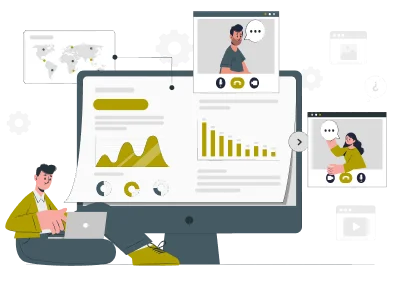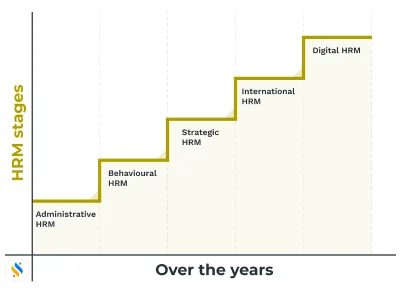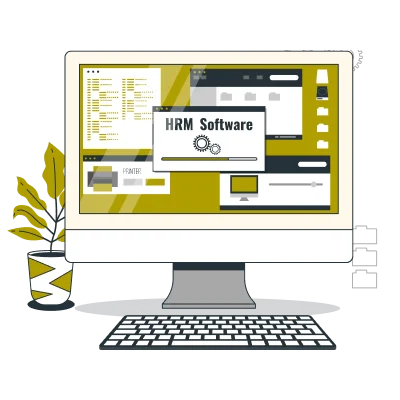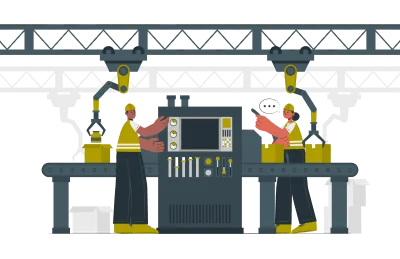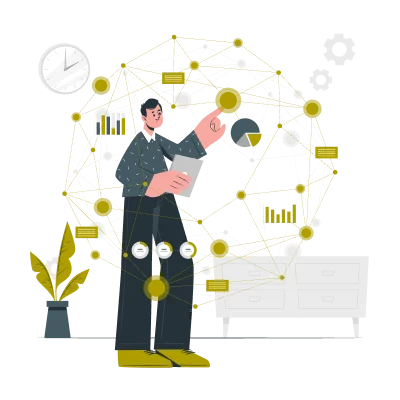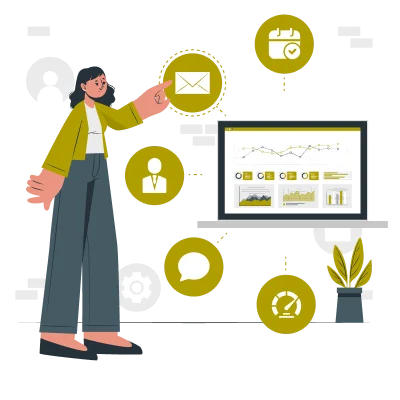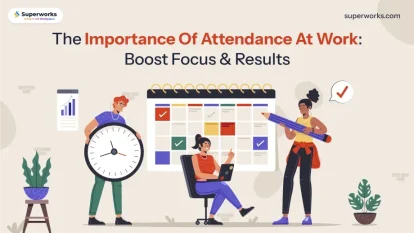Grab a chance to avail 6 Months of Performance Module for FREE
Book a free demo session & learn more about it!
-
Will customized solution for your needs
-
Empowering users with user-friendly features
-
Driving success across diverse industries, everywhere.
Grab a chance to avail 6 Months of Performance Module for FREE
Book a free demo session & learn more about it!
Superworks
Modern HR Workplace
Your Partner in the entire Employee Life Cycle
From recruitment to retirement manage every stage of employee lifecycle with ease.


Seamless onboarding & offboarding
Automated compliance & payroll
Track performance & engagement
The Evolution Of HRM: Human Resource Management Processes- Then And Now
- Superworks
- 7 min read
- April 16, 2024
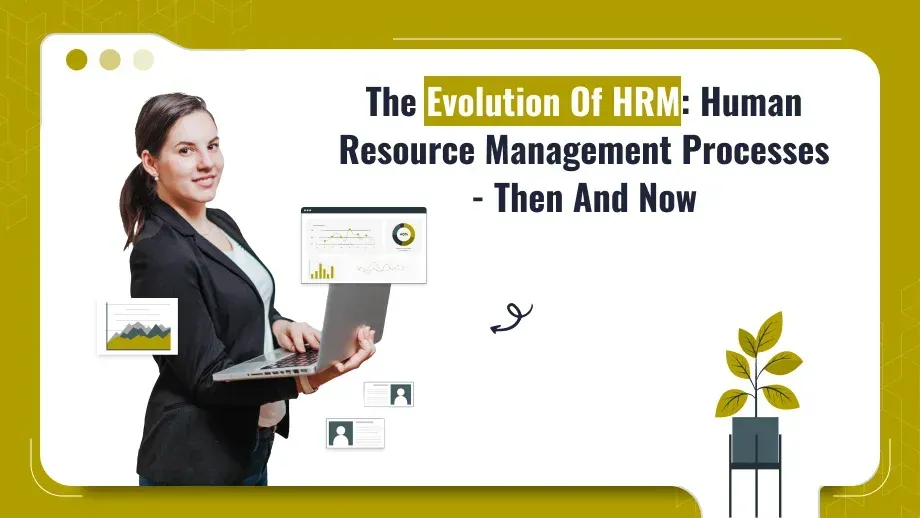
There is not only an evolution of HRM, but we can say it’s a “Revolution in HRM”!
Over the years, Human Resource Management (HRM) has evolved in different ways from introducing the department to digitalizing it.
Right now, HRM has become more structured with clear rules, emphasizing employee happiness. Finally, it became more strategic, aligning closely with what the company aims to achieve, which continues to be the case today.
History Of Human Resource Management
The history of Human Resource Management (HRM) goes back to the early stages when businesses started seeing the need to address employee issues!
There was no tracking of timing, less industrial growth, and formation of labor unions and many things were changed. Companies realized now that good HRM was key to stability, higher production, and fewer labor conflicts.
The growth and evolution of HRM in HR processes mainly dealt with tasks like payroll, following labor laws, and keeping employee records.
Read More: 7 Steps for Selecting and Implementing an HRMS Solution

Do you want to evolute HRM? – Get Superworks HRMS software!
Upgrade to Superworks HRMS software today and streamline your recruitment and HR processes.
Don’t wait, elevate your HRM with Superworks now!
Generations of the Evolution Of HRM in India
Human Resource Management (HRM) has changed over the years to fit the needs of companies and their workers better.
Here are the main ways HRM has evolved:
Administrative HRM
In the beginning, HRM was mostly about keeping records and following work laws. It dealt with tasks like employee data management, hiring people, managing payroll, and handling benefits.
Behavioural HRM
Then the human resource management era started focusing on how to manage employees better. This meant looking at how to keep employees motivated, improving communication, and training leaders. It also brought in systems to measure performance and started team-building activities.
Strategic HRM
Then HRM has changed to match the new business world. strategic human resource management is about connecting HR plans with business goals. It aims to create a culture where employees perform at their best, manage talents effectively, and plan for future workforce needs.
International HRM
As businesses started working globally, HRM had to manage employees from various cultures and countries. This type of HRM deals with different laws and creates HR rules that work both globally and locally.
Digital HRM
Recently, HRMS tools as the evolution and development of HRM. This includes using HRMS software, online hiring, online training, social media, and data analysis to make HR tasks better, make smarter decisions, and improve the employee experience.
Objectives of HRM Function – Strategic Human Resource Management
Human Resource Management (HRM) has changed a lot. It’s now more than just adding data in Google spreadsheets and handling paperwork; it’s a key part of making a business successful by managing and developing its people to fit the needs of today’s business world.
Human Resource Management Transition
Before, HRM mainly focused on administrative tasks or core HR. But in the early 20th century, it became more strategic. Human resource practices professionals began to play a bigger role in making important decisions for the company. Now, using automation in hiring and focusing on keeping employees engaged are examples of this new, proactive approach.
Continual Change in HRM
In recent times, HRM has transformed a lot. Earlier it was just focusing on paperwork- now it plays a strategic role in the company. This evolution of human resource management aligns the company’s goals with its people. This thing helps employees grow, and building a positive work culture are top priority.
Technology and HRM
Technology is not an evolution of HRM but a revolution for human resource management. Tools like software for HR, applicant tracking systems, and payroll software have made HR tasks easier and more efficient. These technologies help automate HR tasks, make hiring smoother, and let companies track employee performance in real-time.
With technology, HR can also gather and analyze lots of data to make better decisions. By using technology, companies can improve HR planning process and make smarter decisions about their people.
Future Trends in HRM
First, HRM will need to find ways to make remote work and virtual teams collaborate effectively, however, it can be possible to install the best HR software. This includes better communication and managing performance from afar. Second, there will be a greater focus on employee well-being and balancing work and personal life. Third, technology like automation, and data analytics will become even more important in HRM to streamline processes and make better decisions.
The Industrial Revolution Of HRM & Its Impact
The Industrial Revolution changed the way people worked and how Human Resource Management (HRM) evolved.
During this time, the main goal was to make HR work faster and save more time. HRM started focusing on specific roles for employees, teaching them to do their jobs better. This evolution of HRM human resource management period introduced new technologies like steam power, which led to more organized ways of managing workers.
The rise of labor unions was another big change during the Industrial Revolution. HRM had to learn how to work with these unions and handle employee relations.
In short, the Industrial Revolution made the evolution of HRM more organized. It brought in ideas like specialized roles, standard hiring and training, and dealing with unions.
A Role of Technology Of Human Resource Management Evaluation
Technology has changed the way Human Resource Management (HRM) works, especially recently. New tech tools help HR teams work more efficiently, manage data better, and make the workplace better for employees.
A big change is the use of HR information systems (HRIS). These systems let companies keep track of employee information, automate HR tasks, and make sure data is accurate. With HRIS, HR teams can handle hiring, reviews, benefits, and more all in one place.
Automation technology also helps companies keep employees engaged and connected. It makes them talk to coworkers and feel connected to the company, even if they’re not in the office. Most HRMS software can help to maintain remote work.
For hiring new people, online job platforms and applicant tracking systems have made things easier. These tools make hiring faster, cut down on paperwork, and give job applicants a better experience.
In short, technology has made a big difference in the evolution and growth of HRM. It helps HR teams work better, keeps employees engaged, and makes hiring new talent smoother.
Human Resource Management Features
Hiring the Right People
HRM is in charge of finding the right talent and the best people for the job. It’s not just about filling positions but finding people who can fit well with the company’s goals.
HRMS features for hiring can help to save more time for HR and this is the big evolution of HRM for the same. It makes plans for how to find candidates, interview them, and check if they’re a good fit. Good hiring brings in skilled and diverse employees who can help the company grow and innovate.
Training and Helping Employees Grow
HRM ensures that employees have the skills and that by training they can grow. They organize training sessions, and workshops, and provide online resources to help employees learn and grow. By training employees, HRM helps them perform better and adapt to new job challenges.
Paying and Rewarding Employees
HRM gives out bonuses, and salary levels, and offers benefits like health insurance and retirement plans. Offering competitive pay and benefits is important to keep employees happy and motivated. By ensuring fair pay and good benefits, HRM helps keep employees satisfied and reduces turnover.
Keeping Good Relationships With Employees
HRM works to create a positive work environment. They act as mediators when there are conflicts and encourage good communication between employees.
They also set and enforce workplace rules and address any concerns employees might have. By promoting a positive culture and addressing issues, HRM helps keep employees happy, engaged, and healthy.
Wrapping Up
If you want to revolutionize your HR management you can also do so by adopting the latest technology and tools. Superworks has all-in-one tools Super HRMS, Super Payroll, and many more, that can help all over the business. From core HR and administrative tasks to payroll we can handle all the tasks.
Don’t think much, follow the trends, and make your HR management as good as possible.
Also See: Employee rewards & recognition
